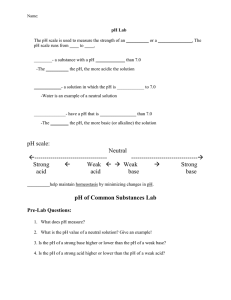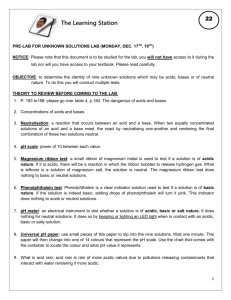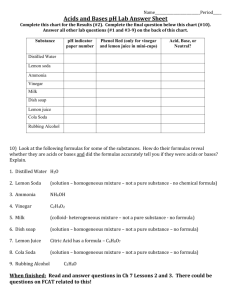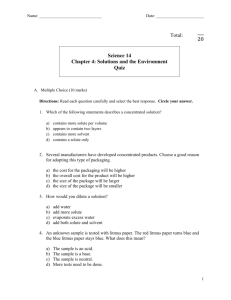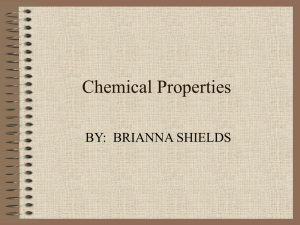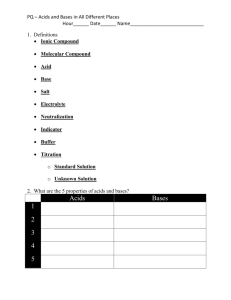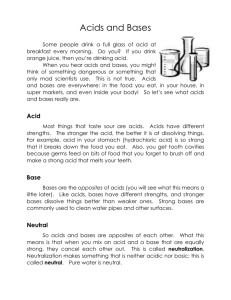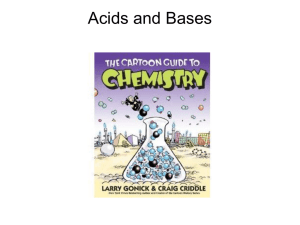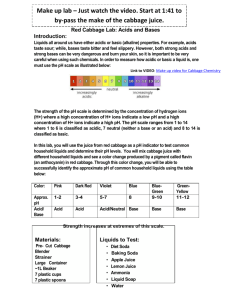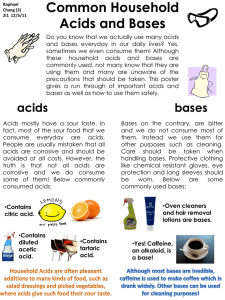Acid/Base - WordPress.com
advertisement
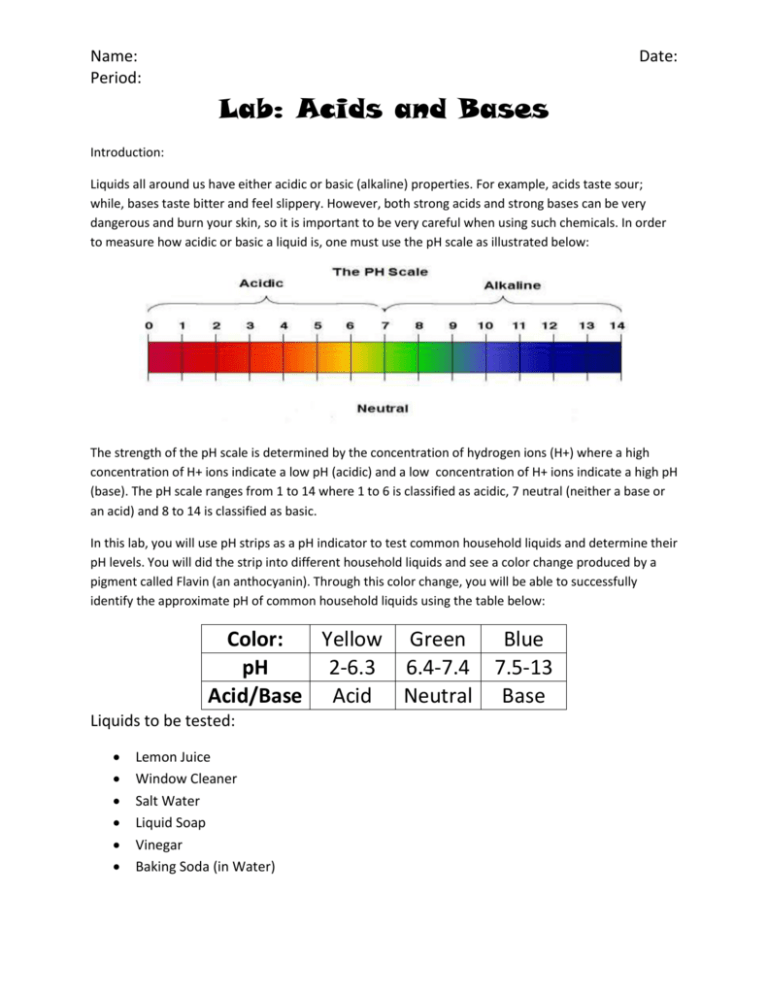
Name: Period: Date: Lab: Acids and Bases Introduction: Liquids all around us have either acidic or basic (alkaline) properties. For example, acids taste sour; while, bases taste bitter and feel slippery. However, both strong acids and strong bases can be very dangerous and burn your skin, so it is important to be very careful when using such chemicals. In order to measure how acidic or basic a liquid is, one must use the pH scale as illustrated below: The strength of the pH scale is determined by the concentration of hydrogen ions (H+) where a high concentration of H+ ions indicate a low pH (acidic) and a low concentration of H+ ions indicate a high pH (base). The pH scale ranges from 1 to 14 where 1 to 6 is classified as acidic, 7 neutral (neither a base or an acid) and 8 to 14 is classified as basic. In this lab, you will use pH strips as a pH indicator to test common household liquids and determine their pH levels. You will did the strip into different household liquids and see a color change produced by a pigment called Flavin (an anthocyanin). Through this color change, you will be able to successfully identify the approximate pH of common household liquids using the table below: Color: Yellow Green Blue pH 2-6.3 6.4-7.4 7.5-13 Acid/Base Acid Neutral Base Liquids to be tested: Lemon Juice Window Cleaner Salt Water Liquid Soap Vinegar Baking Soda (in Water) Name: Period: Date: Pre-Laboratory Predictions: Look at each of the liquids being tested. Predict whether each of the substance is acidic , neutral or basic. Circle one. (Think about the properties of acids and bases.) Lemon Juice Acid Neutral Base Window Cleaner Acid Neutral Base Salt Water Acid Neutral Base Liquid Soap Acid Neutral Base Vinegar Acid Neutral Base Baking Soda Acid Neutral Base Procedure: 1. 2. 3. 4. Dip a pH strip into each substance. Record the color of the pH strip Based on the color, write what number the color represents. After recording the color for each substance go back to your seat and look up the actual PH for each substance. Substance Lemon Juice Window Cleaner Salt Water Liquid Soap Vinegar Baking Soda Color of pH strip pH (#) Actual pH Name: Period: To be an acid, the range of pH must be:_________________ Date: To be a base, the range of pH must be:_________________ To be neutral, the pH must be: _____________ Categorize your findings below: Strong Acids Weak Acids Neutral Weak Bases Strong Bases 1. Which of the results surprised you the most? Why? 2. Did the addition of baking soda change the pH of the substance? Explain. 3. Does the addition of water (baking soda +water) alter the pH of weak acids/bases? 4. Does adding water change the pH of strong acids/bases? Why or why not? 5. What does a low pH number indicate about the H+ concentration in the solution? Name: Date: Period: 6. How does a difference in 1 pH unit change in terms of H+ concentration? Example: How does a pH of 3 differ from pH of 4? 7. Compare and Contrast Acids and Bases in three sentences. 8. Neutralization: Whenever you mix an acid with a base, they neutralize each other. If this is the case, why is Alka- Seltzer used to treat stomach aches? (Note: excess stomach acids cause stomach aches) 9. Acid Rain is a phenomenon where rain becomes slightly acidic due to pollution in the air. Why do you think acid rain is it a problem to oceans, rivers, lakes, ponds etc. and the creatures that live in them? Give a minimum of three examples. Name: Period: Date: Place all of your substances on the pH scale below 14 13 B a s i c 12 11 10 9 8 Neutral 7 6 A c i d i c 5 4 3 2 1 List Four properties of Acids: List Four properties of Bases:
